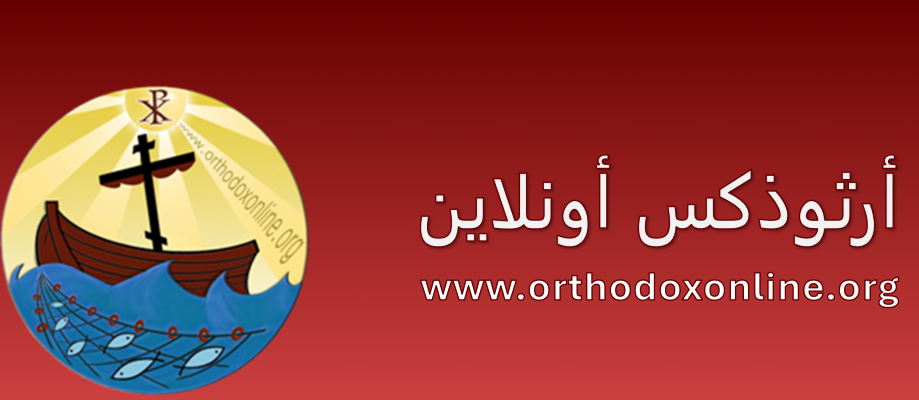There is a clear difference between the atmosphere of Palm Sunday and the atmosphere of Holy Monday. While Palm Sunday spoke of the coming of the King, Holy Monday announces the return of the Son of Man at the end of times. While the entry of our King into Jerusalem - and his entry into our souls if we wish - was a manifestation of his humility and kindness, his second appearance, which the Church contemplates on Holy Monday, will be characterized by the nature of a sudden and violent catastrophe. Before his death, Jesus wants to alert people to the dangerous event.
The Church moves to this new level in the Great Monday sunset prayer held on the evening of Palm Sunday, when it says: (Let us hasten, O believers, moving from one divine feast to another like it, from palms and branches to the continuation of the venerable saving suffering of Christ). Vespers prayer is immediately followed by the “circumcision” service, which is the dawn prayer special for this day, in which we sing, after the dawn psalms and the Alleluia. (29)A troparia that begins like this: (Behold, the circumcision comes at midnight. Blessed is the servant who finds him awake, but he who finds him neglectful is not worthy. See, then, my soul, that you do not oversleep...). And the Kathsmats speak (30) About the Passion of Christ: (This present day shines to the world the venerable Passion as saving lights... This present day brilliantly presents the principles of the Lord’s Passion). Then we listen to a Gospel recitation (Matthew 21:18-43) that can be divided into three parts. The first part tells how the Lord cursed the fig tree and how it dried up. As for the spiritual interpretation of this passage, it is clear: the fig tree bore leaves but did not bear fruit, and thus the person who pretends to be fertile and work is cursed while in reality he remains deep. The second part of the Gospel speaks about what took place between Jesus and the priests in the temple: (- By what authority do you do this...? - And I also ask you about one word, and if you say it to me, I will also tell you by what authority I do this: Where did the baptism of John come from? From heaven or Of the people?). The priests remained silent for fear of the shame that might befall them as a result of a positive or negative answer. As for the third section of the Gospel, it contains two parables: the parable of the two sons who were sent by their father to work in the vineyard. The first refused, then repented and left, and the second accepted but did not go, and it ends by saying: (And so the tax collectors and the prostitutes will precede you into the kingdom of God). Then he represented the workers of the vineyard who kill the messengers from the owner of the vineyard and even his son. The Bible says that their punishment will be terrible, but it adds that the stone that the builders rejected will become the cornerstone of the building. The Valleys of the Law repeatedly refer to Joseph, who was hated by his brothers and sold, then imprisoned: Joseph is an image of the suffering Christ.
Three prophecies are read in the services (sixth and vespers) that precede the Mass (of the previously sanctified Holy Places). We first hear the first twenty verses of the Book of the Prophet Ezekiel, which speak of his vision of the four winged beings, each bearing four faces, setting off in a rush of spirit. Since ancient times, the Church has considered these beings to represent the four Evangelists. It seems that this passage was chosen to be read on this day, even though it has no connection to Holy Monday or to the entire Holy Week, to be the beginning of the reading of Ezekiel’s prophecy that will be continued during the entire week. We later listen to the reading of the first chapter of the Book of Exodus, which talks about the suffering of the Jewish people in Egypt. Naturally, this passage was chosen because the Book of Exodus tells the story of the salvation of the people of Israel from Egypt, which symbolizes the Christian Passover. Then we hear a reading from the beginning of the Book of Job (1:1-12). Job's suffering makes him another image of Jesus Christ. As for the Gospel that is recited in the Mass (31) (Matthew 3:24-35) He returns to the subject of the terrible second coming of Christ, accompanied by disasters, darkness, wars, and “severe tribulation the likes of which has not occurred since the foundation of the world until now, and never will.” One of the verses of this recitation summarizes the entire teaching of the Great Monday: (Just as the lightning comes from the east and appears to the west, so will the coming of the Son of Man be).
(29) During Lent and Holy Week, the Greek Church frequently uses the phrase (Alleluia). While the Latin Church stopped using it completely in the same period. On the night of Passover, the Jews used to chant (Hallelujah of Egypt), which is like six psalms in which the word Alleluia is repeated repeatedly. It is possible that Jesus and his disciples sang these psalms before they left the upper room for Gethsemane. The word (Hallelujah) means (Glory be to you, O Jehovah).
(30) Kathismas are pieces of service that can be seated while being sung.
(31) The Progismanian Mass service usually does not contain the reading of an Epistle and Gospel. Their presence here is one of the characteristics of the Holy Week.


